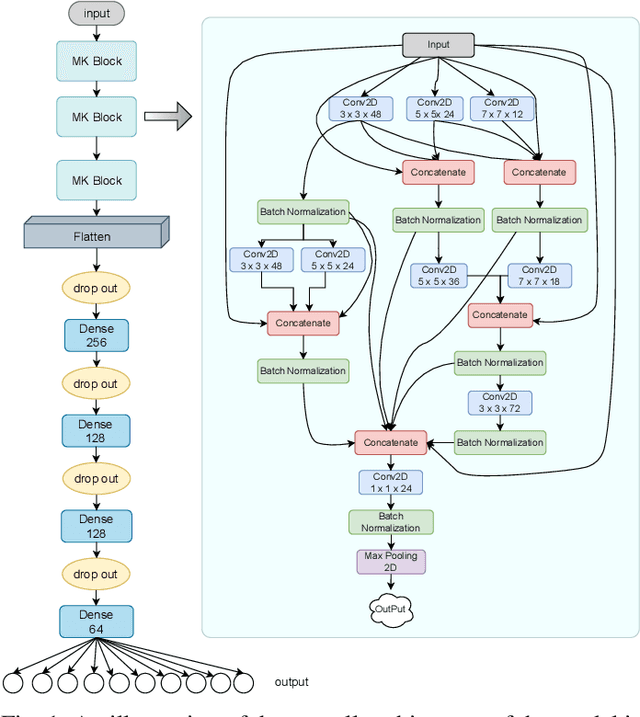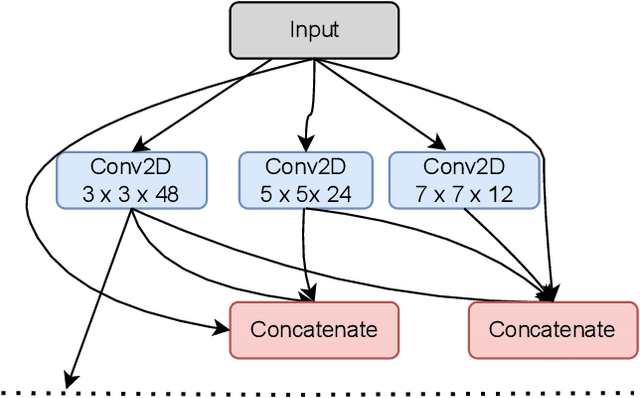Hamid Bahador
A Block-based Convolutional Neural Network for Low-Resolution Image Classification
Jul 19, 2022



Abstract:The success of CNN-based architecture on image classification in learning and extracting features made them so popular these days, but the task of image classification becomes more challenging when we use state of art models to classify noisy and low-quality images. To solve this problem, we proposed a novel image classification architecture that learns subtle details in low-resolution images that are blurred and noisy. In order to build our new blocks, we used the idea of Res Connections and the Inception module ideas. Using the MNIST datasets, we have conducted extensive experiments that show that the introduced architecture is more accurate and faster than other state-of-the-art Convolutional neural networks. As a result of the special characteristics of our model, it can achieve a better result with fewer parameters.
Towards Fine-grained Image Classification with Generative Adversarial Networks and Facial Landmark Detection
Aug 28, 2021



Abstract:Fine-grained classification remains a challenging task because distinguishing categories needs learning complex and local differences. Diversity in the pose, scale, and position of objects in an image makes the problem even more difficult. Although the recent Vision Transformer models achieve high performance, they need an extensive volume of input data. To encounter this problem, we made the best use of GAN-based data augmentation to generate extra dataset instances. Oxford-IIIT Pets was our dataset of choice for this experiment. It consists of 37 breeds of cats and dogs with variations in scale, poses, and lighting, which intensifies the difficulty of the classification task. Furthermore, we enhanced the performance of the recent Generative Adversarial Network (GAN), StyleGAN2-ADA model to generate more realistic images while preventing overfitting to the training set. We did this by training a customized version of MobileNetV2 to predict animal facial landmarks; then, we cropped images accordingly. Lastly, we combined the synthetic images with the original dataset and compared our proposed method with standard GANs augmentation and no augmentation with different subsets of training data. We validated our work by evaluating the accuracy of fine-grained image classification on the recent Vision Transformer (ViT) Model.
 Add to Chrome
Add to Chrome Add to Firefox
Add to Firefox Add to Edge
Add to Edge